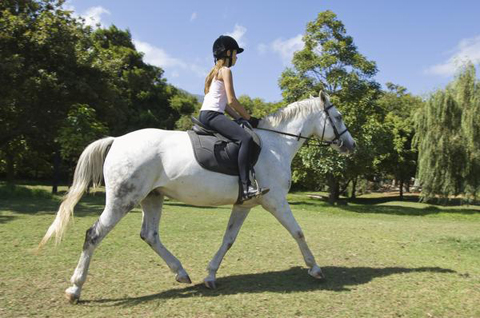
From the excellent website The Horse.com.
As of 2013, only four states–California, Maryland, Nevada and New York–do not have equine activity statutes. Do equine activity statutes offer real protection for horse people? If so, what protection do they provide, and are there any traps for the unwary?
What Is an Equine Activity Statute?
An equine activity statute is a law designed to limit liability for injuries and deaths connected with horse-related activities. The principle of equine activity statutes is a long-standing legal doctrine, “assumption of the risk.” A person assumes the risk of participating in an activity if they have full knowledge of the risks involved and decide to participate anyway. Assumption of the risk is often a successful legal defense in horse accident cases, even in states without equine activity statutes.
How Does an Equine Activity Statute Benefit Me?
Equine activity statutes have two key benefits. First, they discourage people from suing. Plaintiffs’ attorneys often work on contingency (they get paid only if their client wins) and therefore, they prefer to take on cases they believe they can win. If an equine activity statute means the case will be harder to win, plaintiffs’ attorneys will be less likely to take the case. Potential plaintiffs will therefore have a more difficult time finding an attorney to represent them, resulting in fewer lawsuits filed. If fewer attorneys are interested in taking a case, the potential plaintiff will also likely pay more for legal representation, making them less likely to file a lawsuit.
By bolstering the available legal defenses, equine activity statutes may also result in earlier settlements and lower settlement amounts. Equine activity statutes can also help end a lawsuit earlier, thereby reducing defense costs. If a lawsuit is dismissed at the summary judgment phase, the parties can avoid preparing for and going to trial, typically the most expensive part of a lawsuit.
Equine activity statutes also have an ancillary benefit. Lower defense costs, fewer lawsuits and less expensive settlements mean less risk for insurance companies. Lower risk means that more insurance companies are willing to write coverage.
What are the Disadvantages of Equine Activity Statutes?
First and foremost, many people have the misconception that an equine activity statute gives them immunity from liability. They may believe that because their state has an equine activity statute, they do not need a liability release or even insurance. Those beliefs are simply false.
Even in a state that has an equine activity statute, you can be liable for negligence and willful misconduct. Most equine activity statutes are very specific about this exclusion. For example, Pennsylvania’s equine activity statute states, “Nothing…shall bar or limit the liability of an equine activity sponsor, equine professional or any other participant if [they were] grossly negligent or committed an act or omission which constitutes willful or reckless disregard for the safety of the participant and which caused the injury or death or intentionally injured the participant.”
Equine activity statutes also frequently require specific signage to be posted at the equine facility and/or specific language to be included in contracts and liability releases. If you live in a state with such specific requirements and you don’t follow the requirements, the equine activity statute may not offer any protection for you. For example, Pennsylvania’s equine activity statute requires the following notice to be included in all documents relating to horse activities (and to be posted on the premises): “Warning: Under Pennsylvania law an equine professional and equine activity sponsor is not liable for an injury to or death of a participant in equine activities resulting from the inherent risks of equine activities.”
Equine activity statutes provide protection only for defined groups, and who belongs to those defined groups varies from state to state. For example, Ohio’s equine activity statute specifically includes veterinarians and equine reproductive technicians as “equine professionals,” but Oregon’s equine activity statute does not.
The definitions of “equine” and “equine activity” also vary from state to state. Ohio’s equine activity statute includes zebras and alpacas as “equines,” while Oregon’s equine activity statute does not. “Equine activity” specifically includes shoeing a horse in Ohio, but not in Oregon.
The Bottom Line
If you live in a state that has an equine activity statute:
Don’t assume your state’s equine activity statute covers you and what you are doing. Make sure you read and understand the full text of the statute. If you aren’t sure, ask an equine attorney practicing in your state.
Check to see if your state’s equine activity statute requires posted warning signs (and if it does, put them up).
Don’t hope that someone else’s liability release form will protect you. Have an equine attorney review your contracts, releases, show entry forms and other horse-related documents to make sure that they include any required language (and will otherwise protect you).
Make sure that your existing insurance covers all of your horse related activities and that the limits of your coverage are high enough to provide adequate protection for you. Familiarize yourself with your policy terms, especially the exclusions and the claims process.
